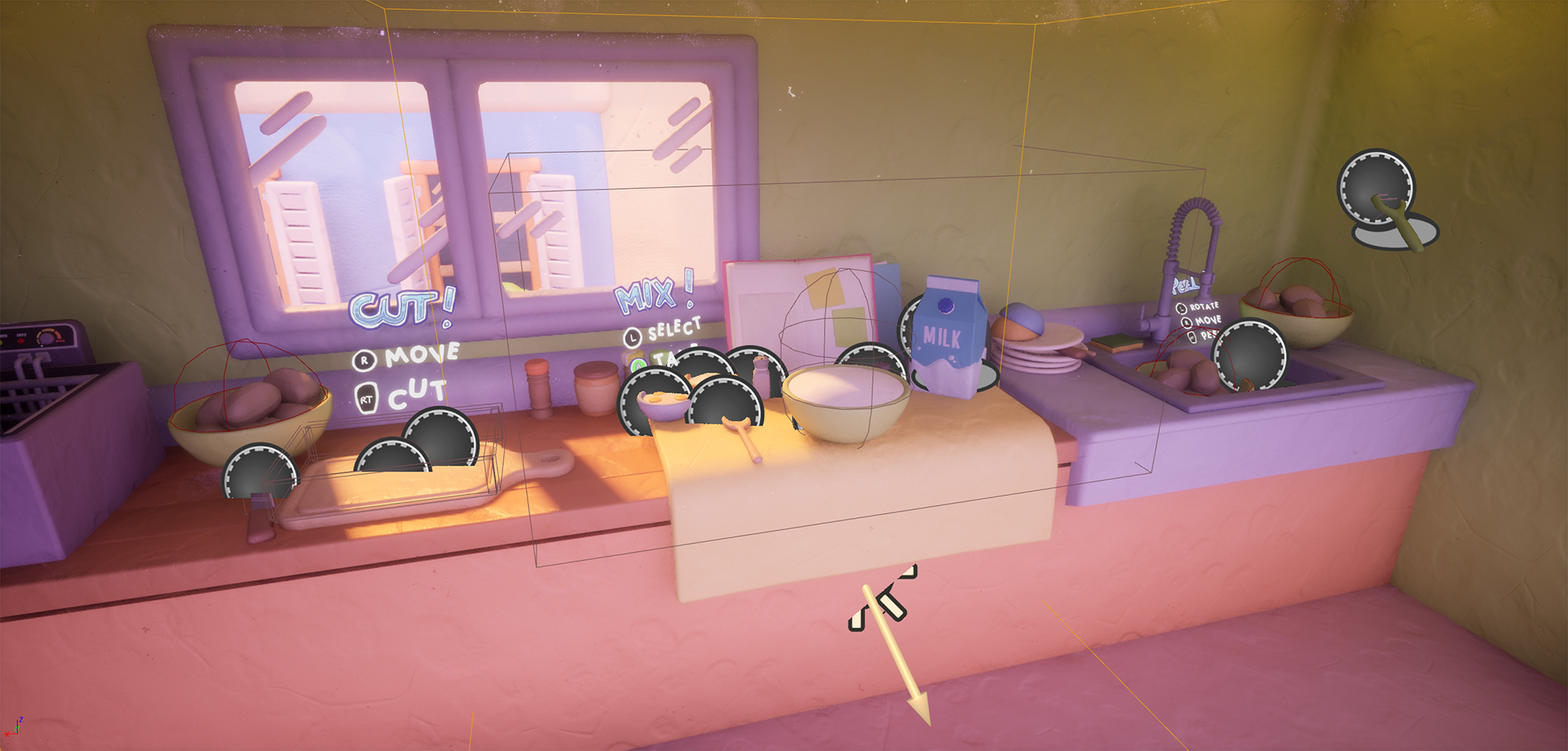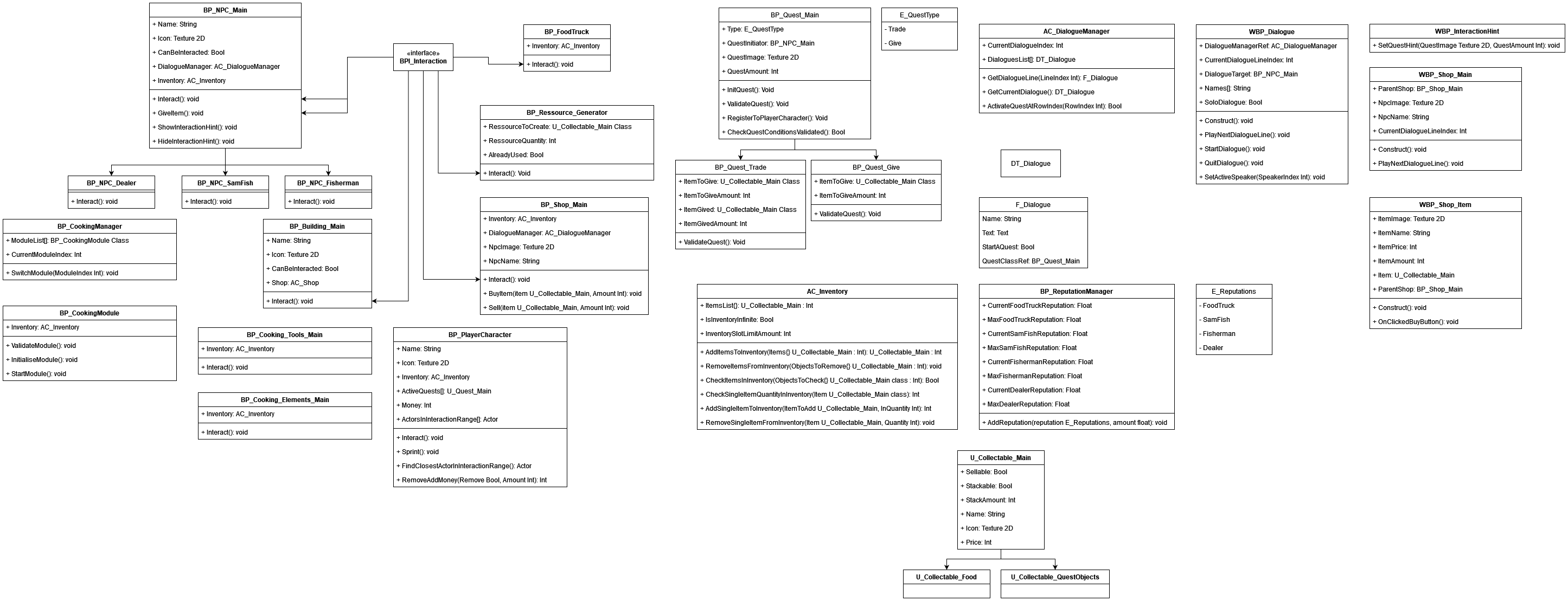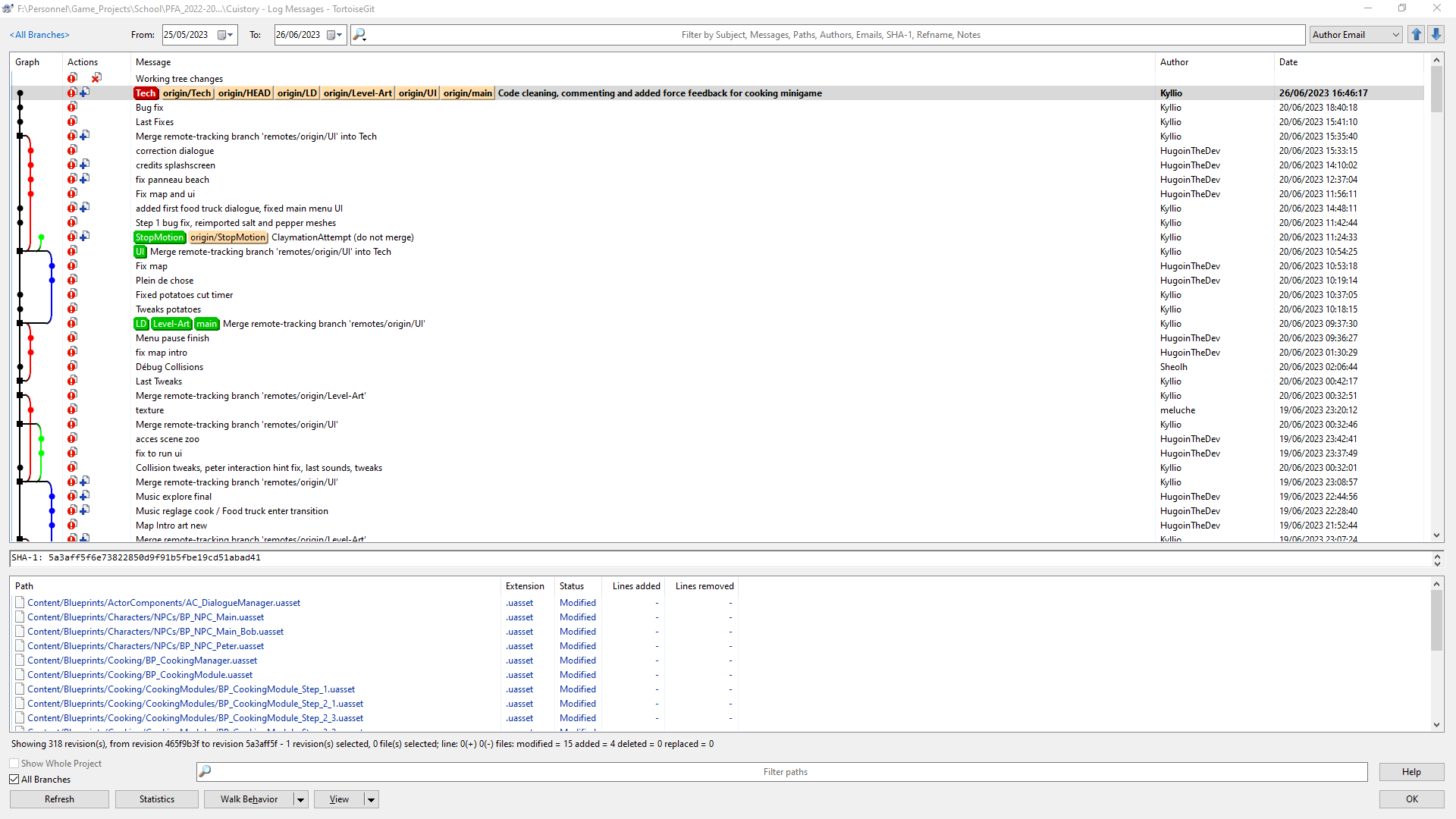CUISTORY
TECHNICAL GAME DESIGNER
DESCRIPTION
Pitch
When a visual novel meets a cooking sim in a suburban cartoon univers.
Synopsis
Playing the role of Billy Sheif, FoodTruck cook, he replaces his grandfather who is in prison, wrongly accused.
Billy Sheif tries to make a name for himself through his cooking in order to gain enough influence to prove the innocence of his grandfather Dave Sheif in a coastal town controlled by gangs.
General informations
• Camera : Top Down
• Multiplayer: Solo
• Business model : Premium
• Platforms : PC / Consoles
• Target : Casuals, Cooking game fans, Adventure game fans
• Rating : PEGI 7
MY CONTRIBUTIONS
Overview
In Cuistory, the player can cook some meals through a minigame. They will play along multiple steps to finish the recipe.
The intention was for the player to have the most feedback possible (visuals, audio, and haptic).
The goal was to make a minigame that was detailed and realistic without falling into the simulation.

The cooking minigame is composed of multiple modules that represent each step of the recipe, cooking recipe objects that contain all the modules and their order, and a cooking manager that triggers all the modules in the right order.
Each module has its setup with its own substeps and behavior and uses cooking elements (like a knife or a peeler) that can be reused in other modules.
Theses modules allow us to modify or create new recipes easily and allow us to work on multiple modules of the same recipe in parallel with the source control.
Module exemple - Cutting potatoes
The dialogue system was developed with Kim Cysique. It is made to be data driven, which means that the narative designers can write all the dialogue lines in a csv file and import it to unreal engine.
Quests can be triggered on a dialogue line and each quest object has its objective displayed to the player through the GUI.
Terms and words of certains types (locations, names, ingredients) are displayed with a different color depending of the type of term to facilitate the reading.
As a tech designer, I've made an UML chart to better plan my code structure.

For source control, we were using Git.
I managed the Git with TortoiseGit.
I created and managed the branches and coordinated the team to avoid merge conflicts.
The others members of the team used GitHub Desktop for its simplicity.
